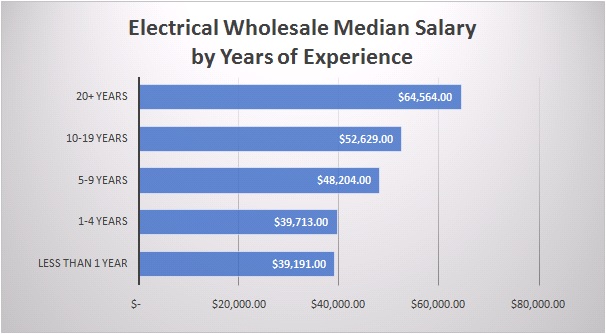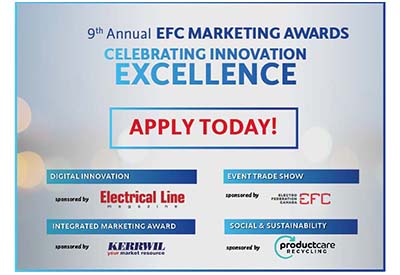Marketing Trends for 2019 and Beyond

May 25, 2019
By Katrina Olson
Marketing trends come and go, as do design, branding, and even copy trends. Some marketers roll with the trends, while others tend to stick with what works, running the same promotions (or types of promotions) year after year, using the same media, and often running the same or similar campaigns.
But we’re living in an era of disruption — from how we conduct business to the structure of the industry itself. Marketing is becoming more technology- and data-based, more targeted, and more dynamic. The distributors and manufacturers who will be around 10 years from now know they can’t keep marketing the same way — not if they want to stay relevant.
Savvy marketers are learning, growing, and moving out of their comfort zone. They’re bolstering their marketing plans and strategies with new technologies and tactics that have proved successful in other industries.
Following are some of the marketing trends that have emerged in the past two to three years that will change electrical distribution channel marketing in 2019 and beyond.
Omnichannel marketing
The best way to understand omnichannel marketing is by comparing it to its predecessor, multichannel marketing. Multichannel was about using a variety of diverse media channels to communicate marketing messages. While multichannel marketing asks, “What channels should we use to push out our message,” Omnichannel marketing asks, “How do customers want to interact with us?” Then, it gives customers many choices for communicating, and it doesn’t matter which one they choose, because they all yield the same results. It’s a seamless experience.
Here’s the payoff. Companies with well-defined omnichannel marketing and customer experience strategies achieve a 91% higher year-over-year increase in customer retention rate, on average, compared to those without, according to research by Aberdeen Group, a B2B market intelligence company. Further, these organizations average a 3.4% increase in customer lifetime value; those without omnichannel programs diminish customer lifetime value by 0.7% year over year.
Video
Professional video producers will cringe at this statement, but anyone can produce videos. Platforms like the about now-deceased Vine, Facebook live, Snapchat and YouTube have, for better or worse, lowered our expectations for video production. Now anyone with a mobile phone can harness the power of video by producing content that’s entertaining, informative, and/or educational.
This year’s Best of the Best contest included several explainer videos, training and educational videos, and product demonstrations. Video can also be used for product walkthroughs, influencer videos, customer or employee testimonials, behind-the-scenes videos, company culture videos, event videos, or webinars.
Video is great for building or enhancing a company’s brand image and helping establish a position as a thought leader or influencer. Broadcast them live, post them on company social media platforms, start a company YouTube channel, put them on your website, and put them on monitors in counter areas.
B2B websites like B2C websites
Both distributors and manufacturers have been reimaging and redesigning their websites to be more like business-to-consumer websites in terms of navigation, design, messaging, and branding. But more importantly, distributors are improving functionality to offer customers features they’ve been demanding like bulk order pads, project portals, in-stock status check, account management features, enhanced search functions, and other features that make it easier to place orders and do business online.
Next-generation SEO
Google is continuously updating its algorithms to improve the quality of search results by down-ranking low quality content. It all started in 2011 when Google introduced its Panda algorithm update, thus launching its war against grey-hat SEO which includes tactics like keyword stuffing, and thin, duplicate or irrelevant content. Google’s July 2018 “PageSpeed” update and context updates now consider the user’s location, search history and other information to prioritize faster-loading websites over slower-loading ones and local sites over distant ones when ranking search results.
The best response to these updates is conducting site audits to reduce duplication issues and publishing more original content. This could be photos, videos, text, a blog, posts, product reviews, Q&A sections, comments on blog posts by visitors, embedded social media links on your site, or content-generating contests on your site — really, anything that causes new content to be posted on your website.
Niche/targeted marketing
Distributors and manufacturers have always targeted specific industries, but in the past few years, distributors have hypertargeting such industries as aviation, healthcare, interior designers, and landscape architects with dedicated, customized marketing pieces, events, microsites, digital e-tours, and specifying/ordering tools. In one case, the targeted effort landed the distributor a multimillion dollar account. That first, large account was so pleased with the distributor, they referred other companies in their industry to the distributor.
One manufacturer developed an interactive, digital tool for the healthcare industry. The 360-degree eTour visually illustrates how and where products and solutions can be used in various settings in a healthcare facility. Users of this tool can visit different departments or physical spaces, click on a product for more information, get part numbers, and go to the product website.
Digital transformation
For several years, a major lighting manufacturer (Legrand) has been using marketing automation to execute drip campaigns as part of integrated marketing campaigns to launch and promote new products. Other manufacturers and a handful of distributors are using CRM and marketing automation systems, but distributors have been slower to adopt marketing technology. However, this seems to be changing as manufacturers and marketing groups are setting higher expectations for their distributor partners.
Many distributors and manufacturers are in some phase of digital transformation. Maybe they’ve assembled an interdepartmental team, they’re building an e-commerce site, or they’re considering a CRM, business intelligence, marketing automation system.
While it’s tempting to immediately commit to a few platforms and start automating, digital transformation is a strategic, often long-term process that requires an investment in people, training, tools, and technology. Research by Ascend2 revealed that 54% of B2B marketers feel the biggest barrier to digital marketing success is the lack of an effective strategy. Some upfront planning will reduce duplication of work among departments, encourage collaboration, and enable sales and marketing alignment.
Personalization/customization
Distributors and manufacturers have been hosting incentive trips for years. When a customer orders or sells a certain amount of product, they earn a trip. Unfortunately, the key influencers or decision-makers weren’t always the same people who went on the trips. And making the trips goal-based excluded small but growing accounts that might need nurturing. Further, with so many people in attendance, it was difficult to give every customer the attention they deserved.
One distributor’s solution was to plan several smaller trips throughout the year, inviting targeted accounts based on more subjective criteria like growth, loyalty, and partnership on special projects. Specific individuals were invited based on their relationship with the sales staff and leadership, along with suppliers whose product offerings matched the needs of those customers. Suppliers provided coop funding for the approximately 30 couples including distributor staff, supplier representatives, and customers. The result was a more intimate, VIP experience for customers and stronger relationships among everyone involved.
Because of the small number of participants, the marketing pieces (e.g. invitations, emails) and even the destination and activities can be highly personalized and customized, making it a unique experience for everyone involved.
Real people
In the past few years, several videos, print ads, and digital ads have featured real employees and customers in everything from recruiting and branding websites, to “how to” videos, to print and digital branding and product ads. Using real employees lends authenticity to the company’s brand, especially when they speak highly of the company.
The Future of marketing
Many distributors are getting into “smart” homes, offices, and buildings. But how many are using that technology in their marketing. I recently listened to a podcast about conversational marketing, a term coined by a company that uses chatbots to screen and generate leads. Coincidentally, I contacted recently two local HVAC companies via their website chat functions to schedule an appointment. In both cases, I asked, “Is this a bot or are you human?” In both cases, the answer was. “I am a real person. At least I was last time I checked. ; )” I assume the two companies used the same third-party conversational AI platform on their websites.
According to a 2019 report titled “B2B Marketing Trends: Insights from the Frontlines of B2B Marketing” by Salesforce Pardot, more and more B2B marketers using artificial intelligence (AI) to create the a more Amazon-like customer experience that customers expect. They’re using AI in marketing automation platforms to drive “next best offers” in real time, improve customer segmentation, creating dynamic websites and landing pages, personalize customer journeys, automate customer interactions via social media or messaging, and more.
Retailers have been using virtual reality (VR) to allow customers to interact with digital environments and augmented reality (AR) for several years. AR is ideal for helping customers visualize offerings that are costly to ship, hard to visualize, or difficult to comprehend. Wayfair and IKEA apps let shoppers see how furniture looks in their home before they buy. The Sherwin Williams app that shows (virtually) how a room looks in various colours before a customer in painting it. It won’t be long before lighting distributors will have access to apps that show a homeowners how various rooms will look with new fixtures and various colours and intensities of light.
It’s an exciting and challenging time to be in electrical distribution, and especially in marketing. The key is to keep attending webinars, workshops, and conferences—keep reading and learning about new platforms, technologies, and strategies, and tactics. And don’t be afraid to experiment. Learn from each effort and improve on it the next time around.
Katrina Olson is a marketing consultant, trainer, speaker, columnist and content developer. She hosts the Market Boldly podcast available on iTunes, Google Play, and at KatrinaOlson.com. Katrina writes for tED magazine, lightEDmag.com, tedmag.com, The Current, and Hardwood Floors magazine, as well as content for several electrical distributor and manufacturer blogs and publications. She has judged tED magazine’s Best of the Best Competition since 2006 and spoken at several industry events for NAED, AD, Legrand and more. She can be reached at Katrina@KatrinaOlson.com or through her website at www/katrinaolson.com.











